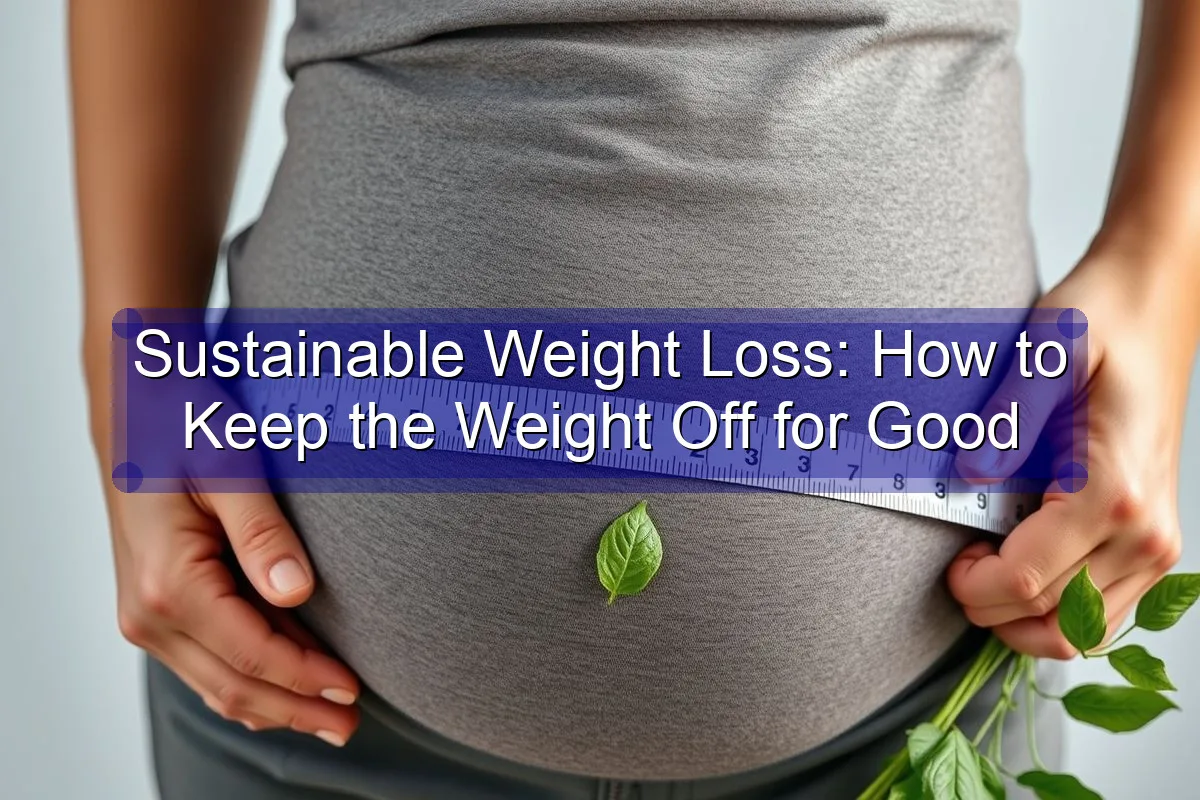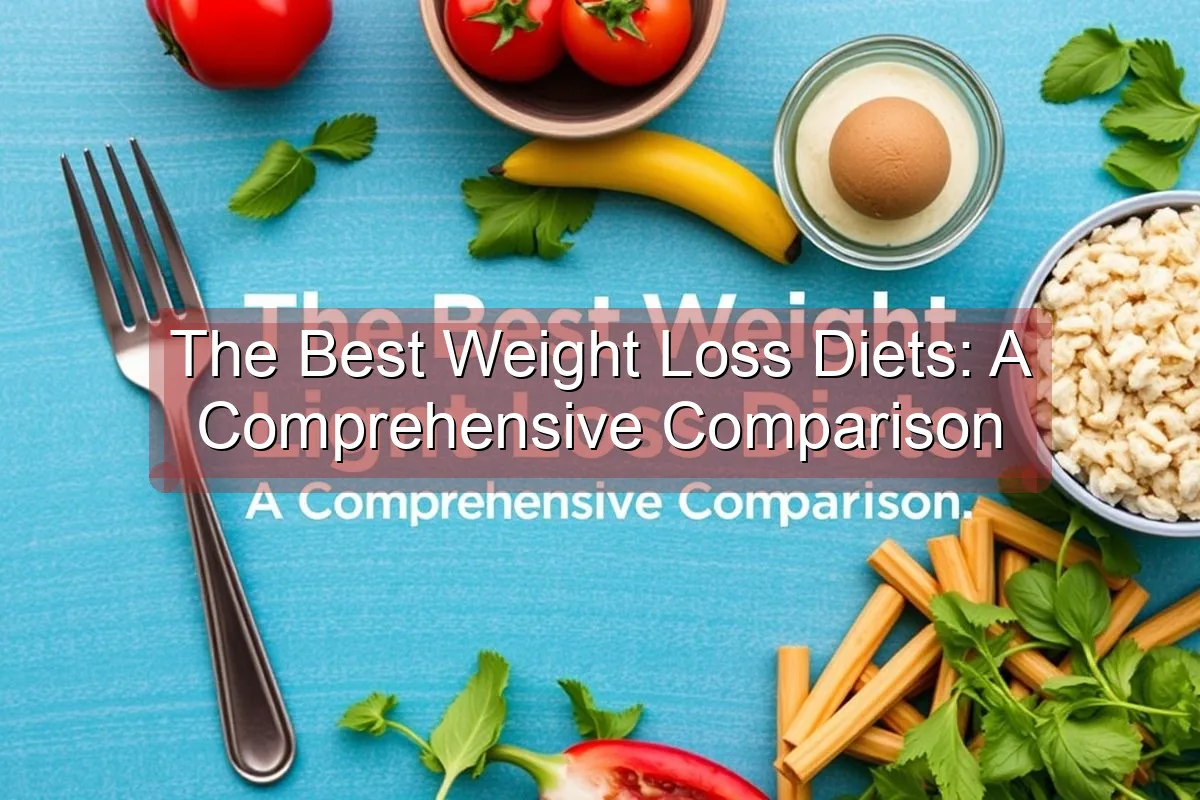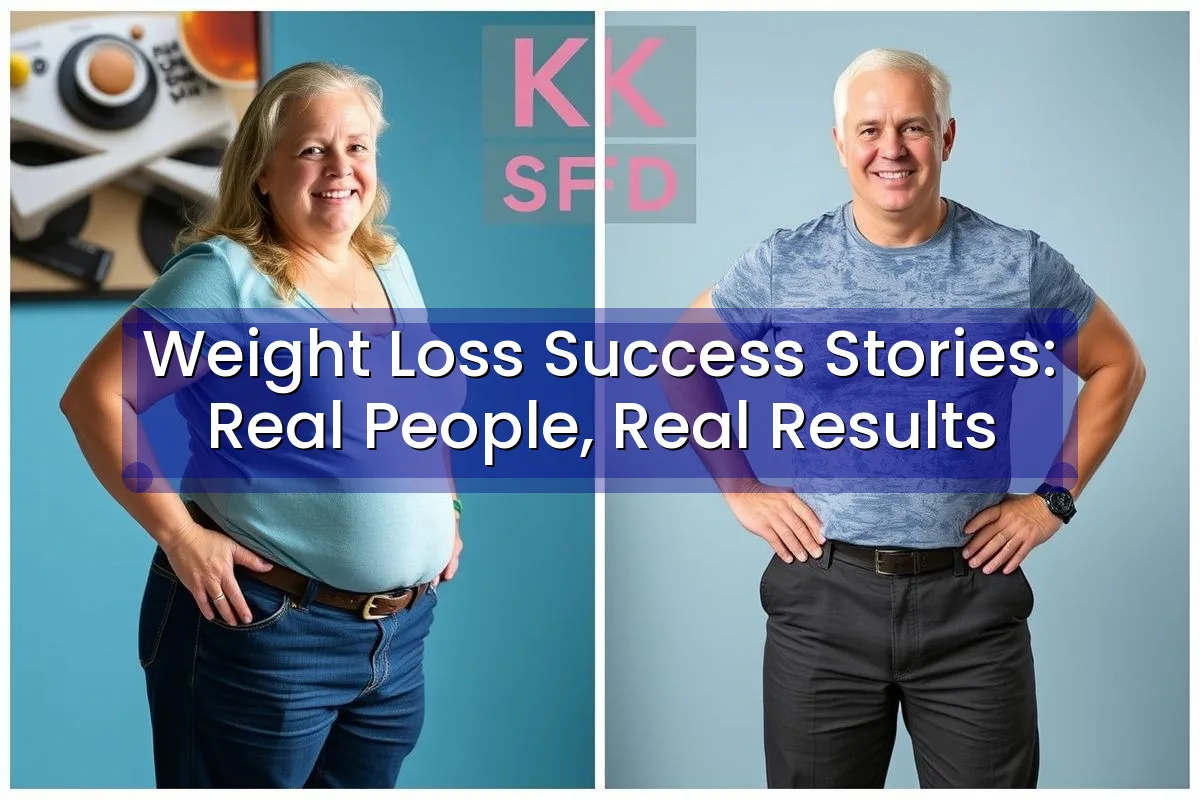
Many people fall into the trap of yo-yo dieting, experiencing cycles of weight loss followed by inevitable weight gain. This can be both physically and emotionally draining. The key to breaking this cycle lies in shifting your focus from short-term restrictions to long-term healthy habits. Instead of viewing weight loss as a temporary goal, consider it an ongoing journey of self-improvement and well-being. By adopting a sustainable approach, you can not only achieve your weight loss goals but also improve your overall health, boost your energy levels, and enhance your quality of life. It’s about creating a lifestyle that supports your health and happiness, rather than just focusing on the numbers on the scale.
This comprehensive guide will provide you with the knowledge and tools you need to achieve sustainable weight loss and keep the weight off for good. We will delve into the key principles of healthy eating, explore effective exercise strategies, and discuss the importance of mindset and behavior change. By following these guidelines, you can create a personalized plan that works for you and helps you achieve your long-term weight loss goals. Remember, the journey to a healthier weight is a personal one, and it’s important to be patient, kind, and compassionate with yourself along the way.
Understanding the Fundamentals of Sustainable Weight Loss
The Importance of a Balanced Diet
A balanced diet is the cornerstone of sustainable weight loss. It’s not about depriving yourself of the foods you love, but rather about making informed choices and incorporating a variety of nutrient-rich foods into your daily meals. A balanced diet should include plenty of fruits, vegetables, whole grains, lean proteins, and healthy fats. These foods provide your body with the essential vitamins, minerals, and antioxidants it needs to function optimally and support weight loss. It’s also important to limit your intake of processed foods, sugary drinks, and unhealthy fats, as these can contribute to weight gain and other health problems.
Focus on eating whole, unprocessed foods as much as possible. These foods are naturally lower in calories and higher in nutrients, making them ideal for weight loss. When planning your meals, aim to fill half your plate with fruits and vegetables, one-quarter with lean protein, and one-quarter with whole grains. This simple guideline can help you ensure that you’re getting a balanced and nutritious meal. It’s also important to pay attention to portion sizes. Even healthy foods can contribute to weight gain if you’re eating too much of them. Use smaller plates and bowls to help control your portion sizes and avoid overeating.
Hydration is also a crucial component of a balanced diet. Drinking plenty of water throughout the day can help you feel full, boost your metabolism, and support overall health. Aim to drink at least eight glasses of water per day, and more if you’re physically active. You can also incorporate other healthy beverages into your diet, such as herbal teas and unsweetened sparkling water. Avoid sugary drinks like soda and juice, as these are high in calories and can sabotage your weight loss efforts. By making smart food choices and staying hydrated, you can create a balanced diet that supports sustainable weight loss and overall well-being.
The Role of Physical Activity
Physical activity is an essential component of sustainable weight loss and overall health. It helps you burn calories, build muscle mass, and improve your cardiovascular health. Regular exercise can also boost your mood, reduce stress, and improve your sleep. Aim for at least 150 minutes of moderate-intensity aerobic exercise or 75 minutes of vigorous-intensity aerobic exercise per week, as recommended by the American Heart Association. You can also incorporate strength training exercises into your routine at least two days per week.
Choose activities that you enjoy and that fit into your lifestyle. This will make it more likely that you’ll stick with your exercise routine in the long term. If you hate running, don’t force yourself to run. Instead, try swimming, cycling, dancing, or hiking. You can also find creative ways to incorporate more physical activity into your daily life, such as taking the stairs instead of the elevator, walking or biking to work, or doing housework. Even small amounts of physical activity can make a big difference in your overall health and weight loss efforts.
Remember to start slowly and gradually increase the intensity and duration of your workouts as you get fitter. It’s also important to listen to your body and take rest days when you need them. Overtraining can lead to injuries and burnout, which can derail your weight loss efforts. By finding a balance between exercise and rest, you can create a sustainable fitness routine that supports your long-term health and weight loss goals. Don’t forget that building muscle helps boost your metabolism, making it easier to burn calories even when you’re at rest. Incorporating strength training into your routine is a great way to promote sustainable weight loss.
Practical Strategies for Long-Term Success
Setting Realistic Goals
Setting realistic goals is crucial for sustainable weight loss. Unrealistic goals can lead to frustration and discouragement, which can ultimately derail your weight loss efforts. Instead of aiming for rapid weight loss, focus on making gradual, sustainable changes to your lifestyle. A healthy rate of weight loss is typically considered to be 1-2 pounds per week. This may not seem like much, but it’s more likely to be sustainable in the long term. It’s far better to lose weight slowly and steadily than to lose it quickly and then gain it all back.
When setting your goals, be specific, measurable, achievable, relevant, and time-bound (SMART). For example, instead of setting a vague goal like “lose weight,” set a SMART goal like “lose 1-2 pounds per week for the next 12 weeks by eating a balanced diet and exercising for 30 minutes, five days per week.” This goal is specific, measurable, achievable, relevant to your overall weight loss goals, and time-bound. Breaking down your larger weight loss goal into smaller, more manageable goals can also help you stay motivated and on track. Celebrate your successes along the way, and don’t be too hard on yourself if you have setbacks. Remember, the journey to sustainable weight loss is a marathon, not a sprint.
It’s also important to focus on non-scale victories. Weight loss is not the only measure of success. Pay attention to other positive changes in your health and well-being, such as increased energy levels, improved sleep, better mood, and reduced blood pressure. These non-scale victories can be just as motivating as seeing the numbers on the scale go down. Focus on improving your overall health and well-being, and the weight loss will follow. By setting realistic goals and celebrating your successes, you can create a positive and sustainable approach to weight loss.
Mindful Eating and Portion Control
Mindful eating and portion control are essential strategies for sustainable weight loss. Mindful eating involves paying attention to your hunger and fullness cues, savoring your food, and eating without distractions. This can help you avoid overeating and make healthier food choices. Practice eating slowly and deliberately, paying attention to the taste, texture, and aroma of your food. Put down your fork between bites, and take a moment to appreciate each mouthful. Avoid eating in front of the TV, computer, or phone, as this can distract you from your hunger and fullness cues.
Portion control involves being aware of the amount of food you’re eating and making sure you’re not overeating. Use smaller plates and bowls to help control your portion sizes. Measure out your food, and avoid eating directly from the bag or container. Pay attention to the serving sizes listed on food labels, and be mindful of how many servings you’re consuming. It’s also helpful to pre-portion your snacks and meals, so you’re not tempted to overeat when you’re hungry. By practicing mindful eating and portion control, you can develop a healthier relationship with food and support your weight loss efforts.
Learning to distinguish between true hunger and emotional hunger is also key. Often, we eat not because we’re physically hungry, but because we’re bored, stressed, or sad. When you feel the urge to eat, ask yourself if you’re truly hungry. If not, try to identify the underlying emotion that’s driving your craving, and find a healthier way to cope with it. Taking a walk, talking to a friend, or practicing relaxation techniques can be effective ways to manage emotional hunger. By becoming more aware of your eating habits and addressing the emotional factors that drive them, you can create a more sustainable weight loss plan.
Maintaining Your Weight Loss
Dealing with Setbacks
Setbacks are a normal part of the sustainable weight loss journey. Everyone experiences periods of time when they struggle to stay on track. It’s important to remember that setbacks don’t mean you’ve failed. They’re simply a temporary obstacle that you can overcome. The key is to learn from your setbacks and use them as an opportunity to grow and improve. Don’t beat yourself up over mistakes. Instead, focus on getting back on track as soon as possible.
When you experience a setback, take some time to reflect on what happened. What triggered the setback? Was it a stressful event, a change in your routine, or a lack of planning? Once you’ve identified the trigger, you can develop strategies to prevent it from happening again in the future. For example, if you tend to overeat when you’re stressed, you can learn relaxation techniques or find other healthy ways to cope with stress. If you struggle to stay on track when you’re traveling, you can pack healthy snacks and plan your meals in advance.
It’s also important to have a support system in place. Talk to your friends, family, or a weight loss professional about your setbacks. They can provide you with encouragement, support, and advice. Remember, you’re not alone in your struggles. Many people experience setbacks on their weight loss journey. By learning from your mistakes, developing coping strategies, and seeking support, you can overcome setbacks and maintain your weight loss for the long term. Sustainable weight loss is a journey of continuous learning and adaptation.
Making it a Lifestyle
Sustainable weight loss is not about following a temporary diet or exercise plan. It’s about making lasting changes to your lifestyle. This means adopting healthy habits that you can maintain for the rest of your life. It’s about creating a new normal that supports your health and well-being. This may involve making changes to your diet, exercise routine, sleep habits, and stress management techniques. It’s about finding a balance that works for you and that you can stick with over the long haul.
One of the keys to making weight loss a lifestyle is to find activities that you enjoy. If you hate going to the gym, don’t force yourself to go. Instead, find other ways to be active that you enjoy, such as hiking, dancing, swimming, or playing sports. When it comes to your diet, focus on eating whole, unprocessed foods that you love. Don’t deprive yourself of your favorite foods, but rather enjoy them in moderation. It’s about finding a balance between healthy eating and enjoying life.
Consistency is also key. The more consistent you are with your healthy habits, the easier it will be to maintain your weight loss. Make healthy eating and exercise a part of your daily routine, just like brushing your teeth or taking a shower. It’s also important to be patient and persistent. It takes time to develop new habits, and there will be times when you slip up. Don’t get discouraged. Just get back on track as soon as possible. By making sustainable weight loss a lifestyle, you can achieve your long-term weight loss goals and improve your overall health and well-being.
| Strategy | Description | Benefits |
|---|---|---|
| Balanced Diet | Eating a variety of nutrient-rich foods | Provides essential nutrients, supports weight loss |
| Regular Exercise | Engaging in physical activity most days of the week | Burns calories, builds muscle, improves cardiovascular health |
| Realistic Goals | Setting achievable and measurable weight loss targets | Maintains motivation, prevents discouragement |
| Mindful Eating | Paying attention to hunger and fullness cues | Prevents overeating, promotes healthier food choices |
| Portion Control | Being aware of the amount of food you’re eating | Helps manage calorie intake, prevents weight gain |
- Eat plenty of fruits and vegetables.
- Choose whole grains over refined grains.
- Incorporate lean protein into your meals.
- Limit your intake of processed foods, sugary drinks, and unhealthy fats.
- Drink plenty of water throughout the day.
- Get regular exercise.
- Set realistic goals.
- Practice mindful eating.
- Control your portion sizes.
- Be patient and persistent.
Frequently Asked Questions About Sustainable Weight Loss
“`












Leave a Reply